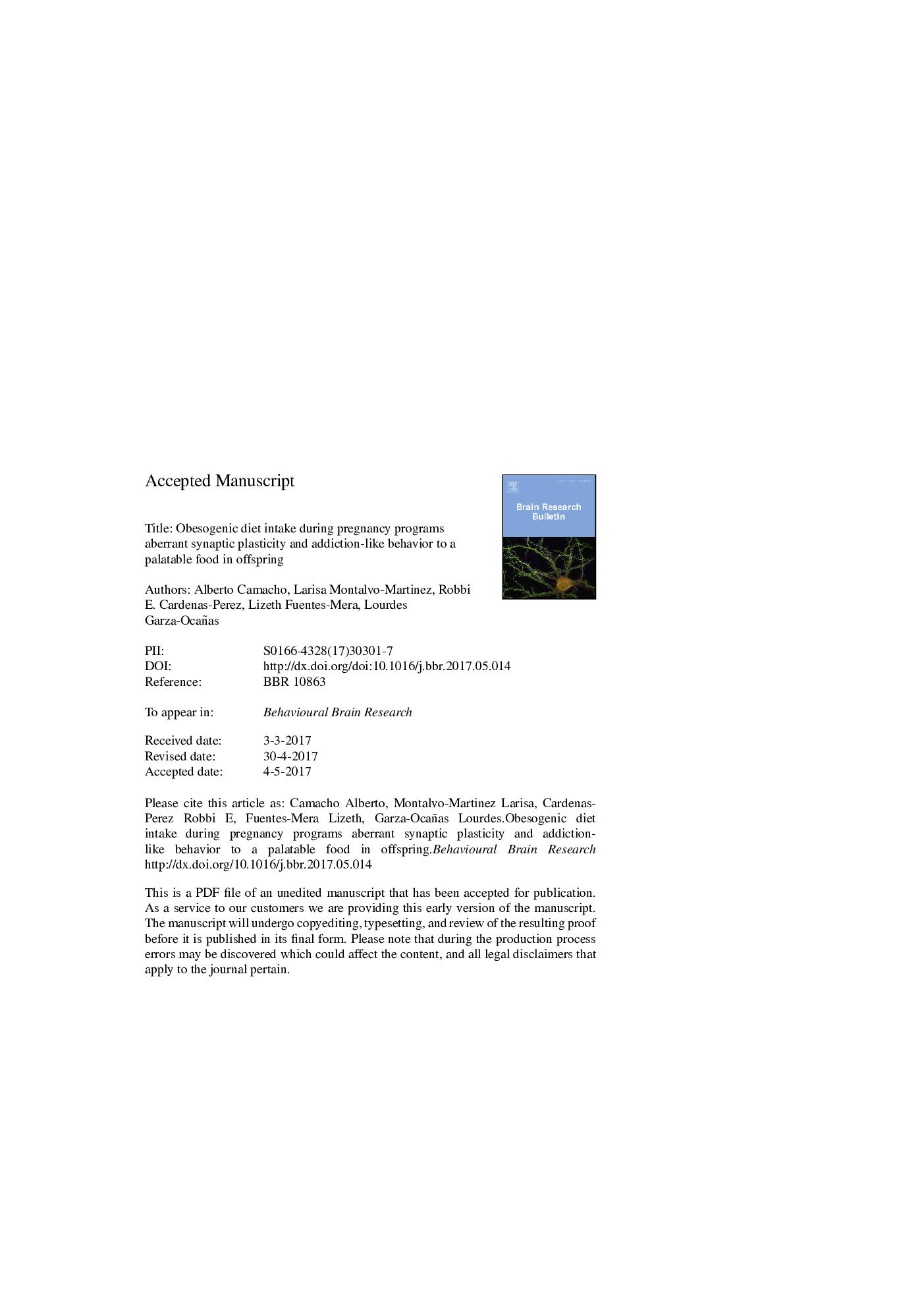| Article ID | Journal | Published Year | Pages | File Type |
|---|---|---|---|---|
| 5735056 | Behavioural Brain Research | 2017 | 37 Pages |
Abstract
Contextual food conditioned behaviors require plasticity of glutamatergic neurotransmission in the reward system, involving changes in the expression of including a-amino-3-hydroxy-5-methylisoxazole 4-propionate receptors (AMPA), N-methyl-d-aspartic acid (NMDA) and metabotropic glutamate 2,3 (mGlur 2,3). However, the role of changes in glutamatergic synaptic markers on energy-dense palatable food preference during development has not been described. Here, we determine the effect of nutritional programing during gestation on fat food choices using a conditioned place preference (CPP) test and an operant training response and its effect on glutamatergic markers in the nucleus accumbens (Nac) shell and prefrontal cortex (PFC). Our data showed that rats displayed preference for palatable fat food and an increase in caloric intake when compared to a chow diet. Notably, 74% of rats showing a preference for fat food intake correlate with a positive HFD-paired score whereas 26% failed to get HFD-conditioned. Also, male rats trained under an operant training response schedule (FR1, FR5 and PR) showed high and low responder groups to work for food. Notably, hypercaloric nutritional programing of female rats leads to exacerbation for reinforcers in female offspring compared to offspring from chow diet. Finally, we found that an operant training response to palatable reinforcers correlates with upregulation of mGlur 2,3 in the NAc shell and PFC of male rats and female offspring. Also, we found selective Nr1 upregulation in NAc shell and the PFC of female offspring. Our data suggest that nutritional programing by hypercaloric intake leads to incentive motivation to work for food and synaptic plasticity alteration in the mesolimbic system.
Related Topics
Life Sciences
Neuroscience
Behavioral Neuroscience
Authors
Alberto Camacho, Larisa Montalvo-Martinez, Robbi E. Cardenas-Perez, Lizeth Fuentes-Mera, Lourdes Garza-Ocañas,
